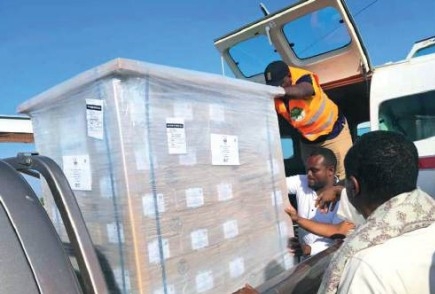The Chief Conservator of Forests, Alex Lemarkoko, has officially opened the National Dialogue on Mangrove Restoration in Kenya.
The event that is taking place in Kwale County is themed "Demystifying mangrove restoration in Kenya: Lessons from success and failure, and creating a path for best practices".
It aims to foster discussions on the vital role of mangroves in achieving Sustainable Development Goals and combating climate change.
Kenya's ambitious tree-planting programme, targeting 15 billion trees by 2032, underscores the nation's commitment to restoring mangroves for carbon offset initiatives and sustainable ecotourism.
The dialogue also provides a platform for stakeholders to explore various strategies for rehabilitating and managing degraded mangrove areas.
Key areas include understanding ecosystem restoration, learning from successful restoration efforts in other ecosystems, and addressing challenges facing ongoing initiatives.
Mangroves are salt-tolerant trees and shrubs in the intertidal regions of the tropical and subtropical coastlines.
They thrive where fresh water mixes with seawater.
In Kenya, they are found in Lamu, Tana River, Kilifi, Mombasa and Kwale counties.
Mangroves are in tidal estuaries, creeks and protected bays.
Lamu has the most mangrove forests at 92,293 acres, followed by Kilifi (21,092 acres) Kwale (20,643 acres) Mombasa (9,318 acres) and Tana River at eight acres.
Mangroves are threatened by deforestation, development, pollution and dam construction.
In his keynote address, Lemarkoko highlighted the economic, ecological, and environmental benefits of mangroves, such as providing wood for construction, fuelwood, and essential habitats for wildlife.
“Threats facing mangroves, including over-exploitation, encroachment, pollution, and natural disasters such as forest fires and heavy sedimentation due to flooding are being addressed effectively through collective, and collaborative approaches,” he said.
The CCF noted that these threats coupled with the conversion of mangrove areas to other land uses as well as infrastructure development are some of the other challenges facing mangrove ecosystems.
In a separate event, Lemarkoko led the service in signing a Framework of Collaboration with Vlinder/Umita for Mangrove Restoration in Kwale County.
The partnership aims to enhance conservation efforts and empower coastal communities through initiatives such as seedling production, capacity-building communities to advance conservation success stories. The collaboration will also support the rehabilitation of KFS security outposts in the county.
The CCF commended Umita for their dedicated partnership despite challenges, emphasizing their active role in conservation efforts is yielding positive outcomes.
He highlighted Umita's capacity-building initiatives and encouraged further collaboration, assuring support from KFS and capacity-building for coastal communities.
Umita's CEO, Isabella Masinde, expressed gratitude for the collaboration, emphasizing Umita's commitment to mangrove restoration. She outlined initiatives including seedling production, security infrastructure development for ranger outposts in mangrove areas and capacity building for CFAs.
These activities are a build-up to the celebration of International Day of Mangrove, July 26 at Mkupwe Mkwekwe Nyanje, Kwale County













